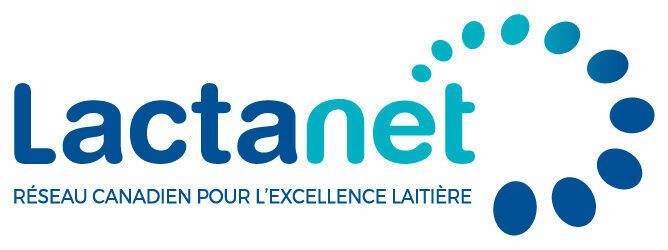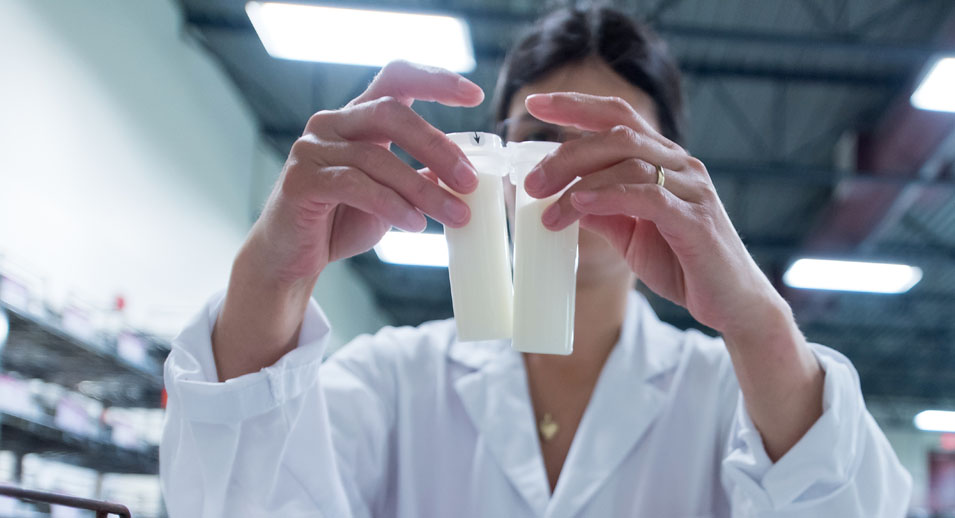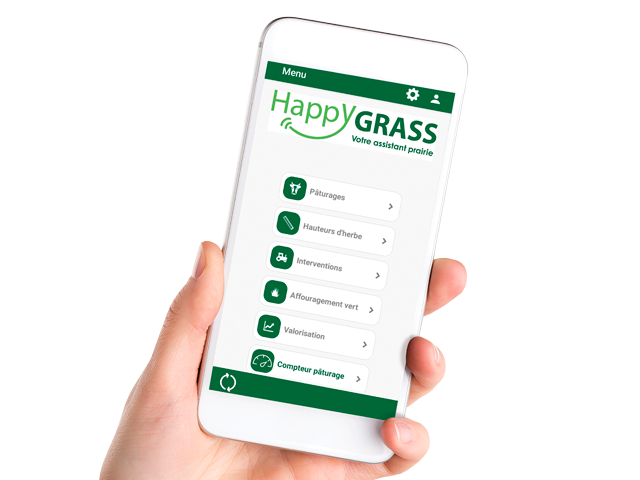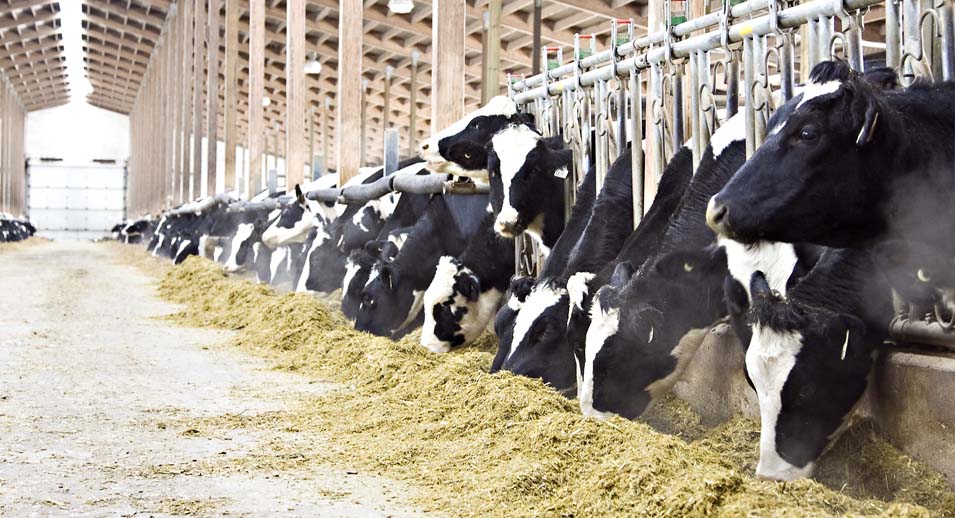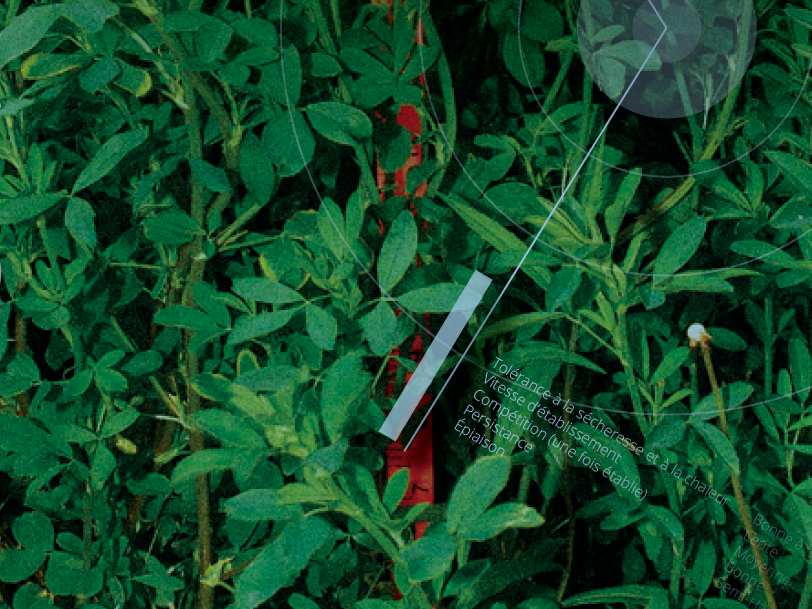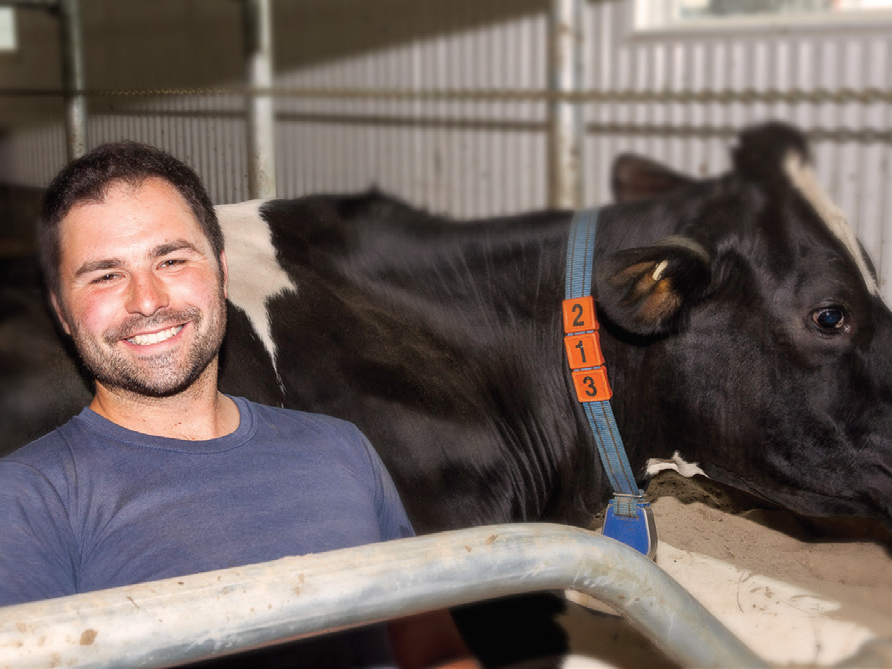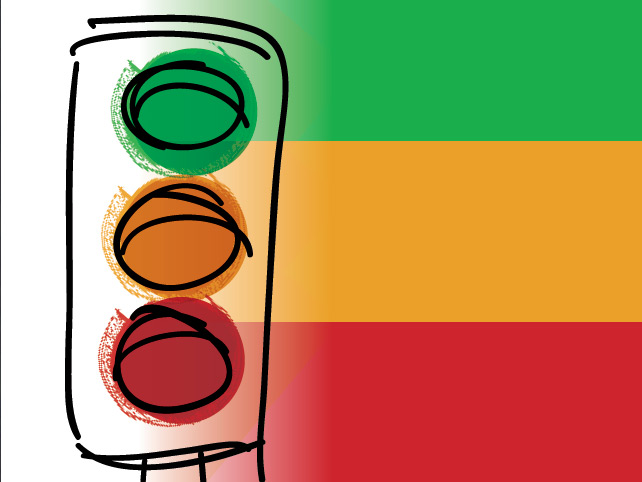Calculating your forage yield is not that complicated
- November 20, 2020
Calculating your forage yield may seem to be a complicated and painstaking task, yet some producers manage to do it without too much trouble. Moreover, they consider the information essential to good farm management. One such producer is Gaétan Gaudreau, from Ferme Degau, in Neuville.
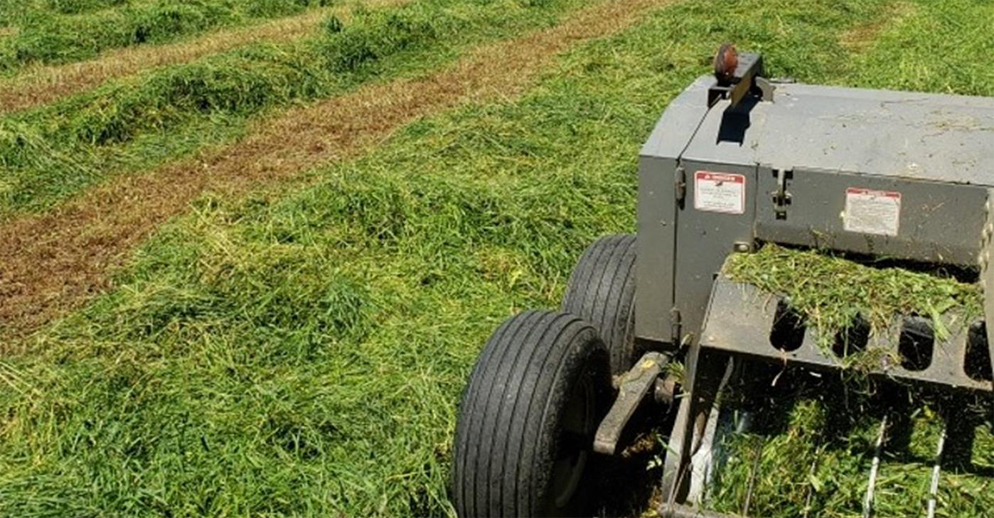
Quantify your harvest as you go
At Ferme Degau, calculating the forage yield is a long-standing practice.
“For as long as I can remember, we have always weighed our bales, even before we joined the management advisory group. It’s really hard to estimate bale weight accurately. In 2017, we bought a used scale for $800 so we could weigh our bales.” – Gaétan Gaudreau
Silage boxes
In the case of grass and corn silage stored in tower silos, two people count the silage boxes. They simply note the number of boxes harvested from each field in a notebook or in their smart phones. Using a Lactanet spreadsheet, they then evaluate the amount of dry matter contained in a box, according to the size of the boxes and the height to which they are filled. By noting the height to which the silo is filled, they can check that the quantity they calculated corresponds to the quantity in the silo, based on its capacity.
Small bales
The bales are counted on the baler as the dry hay is baled and the numbers are recorded. Workers then count aloud the number of small bales as they load the trailers for sale. The trailers are later weighed at a highway weigh-in station.
Large bales
For custom-harvested large square bales, between 6 and 10 bales are weighed with Mr. Gaudreau’s scale at each harvest operation, and the bales are sampled to determine their dry matter content. Prior to purchasing the scale, the bales were weighed at the ecocentre.
Why is it important to know your forage yields?
Whenever possible, Mr. Gaudreau records his yields by field. This allows him to compare his fields and discuss the results with his crop production advisor. He can then implement corrective measures as needed. For Gaétan Gaudreau, calculating the actual yield from his fields enables him to determine the true cost of forage production, with the help of his management advisor.
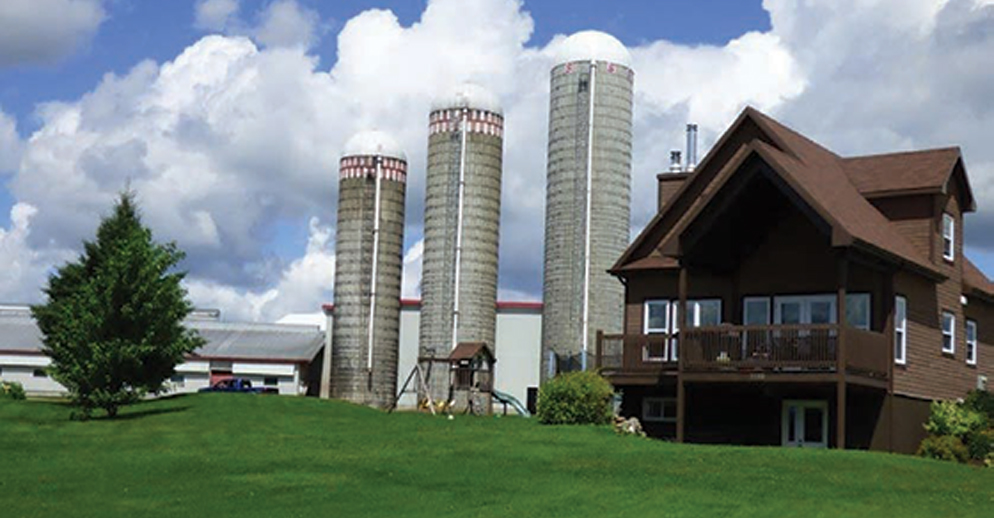
Find out where you stand and set priorities
By calculating his yields and the true cost of his forage production, Mr. Gaudreau can measure his operation against others.
“For me, knowing how much my forage production costs is the same as knowing my production costs for vegetables or sweet corn. When we sell our sweet corn directly from our farm stand, we know how much it cost us to produce it. It’s the same thing for the forage we produce. We sell it to our cows. There has to be some money left in our pockets; otherwise there’s not much point in working.”
“Our yields are above average and that’s what we’re aiming for. Knowing where the farm stands allows us to choose where we’re going to put our efforts and where it will pay off the most.”
They have also begun talking with their management advisor about whether it would be more profitable to turn to custom work. Even if the ideas put forward by the different stakeholders are not always implemented on the farm, having the numbers allows them to consider different options and puts them in a position to make informed decisions.
Forage production costs vary greatly among farms
According to the Agritel database (2018), the average cost of production for grass silage and hay is $235/t DM (Table 1). Costs range from $157 for the top 20 per cent of farms to $350/t DM for the bottom 20 per cent. That difference is attributable, in part, to higher yields for the top group as well as a lower cost per hectare for machinery. Although the acreage devoted to forage production is slightly higher among the top group, this is not the main reason for the lower forage production costs.
Table 1. AVERAGE PRODUCTION COSTS FOR HAY AND GRASS SILAGE FROM 2016 TO 2018 (Agritel)
| TOP 20% | AVERAGE | BOTTOM 20% | |
|---|---|---|---|
| Production costs, $/t DM | 157 | 235 | 360 |
| Yield, t DM/ha | 7.4 | 6.3 | 5.2 |
| Area, ha | 80.3 | 75 | 65.8 |
| Machinery, $/ha | 476 | 608 | 784 |
For corn silage, the gap between the top 20 per cent and the bottom 20 per cent is narrowing. The average production cost for corn silage is $183/t, ranging from $135/t for the top 20 per cent to $261/t for the bottom 20 per cent (Table 2). Here again, a large part of the difference in the production cost is attributable to higher yields and lower machinery costs for the top group.
Table 2. AVERAGE PRODUCTION COSTS FOR CORN SILAGE FROM 2016 TO 2018 (Agritel)
| TOP 20% | AVERAGE | BOTTOM 20% | |
|---|---|---|---|
| Production costs, $/t DM | 135 | 183 | 261 |
| Yield, t DM/ha | 14.6 | 12.8 | 10.5 |
| Area, ha | 24.1 | 23.8 | 21.2 |
| Machinery, $/ha | 769 | 979 | 1,193 |
So higher yields increase the likelihood of lower production costs.
Conclusion
“When you make the effort, it’s not complicated.” – Gaétan Gaudreau


Ferme Degau in brief
Owners: Brothers Gaétan and Stéphane Gaudreau
Herd: 85 heads, including 48 cows in tie-stall housing
Milk production: 10 640 kg milk/cow/year
Crops: 175 ha overall:
- 6 ha in vegetable field crops, including sweet corn
- grass and corn silage stored in three vertical silos
- about 5,000 small square bales of dry hay for sale
- 450 custom-harvested large square hay bales
